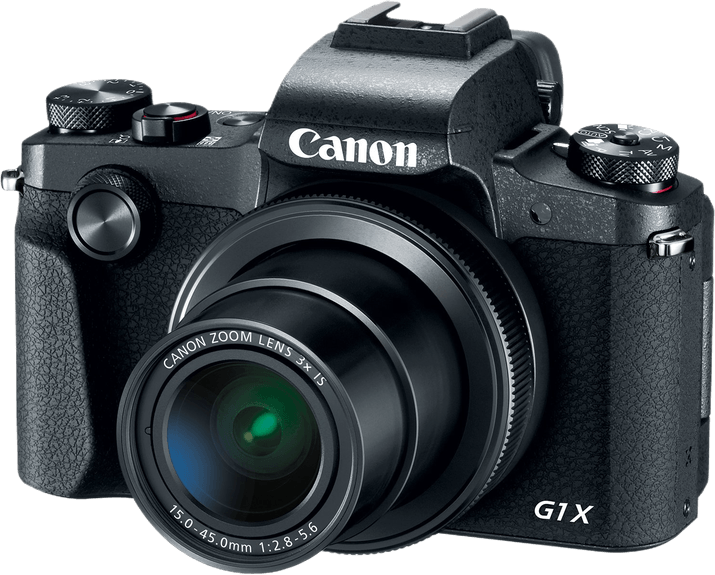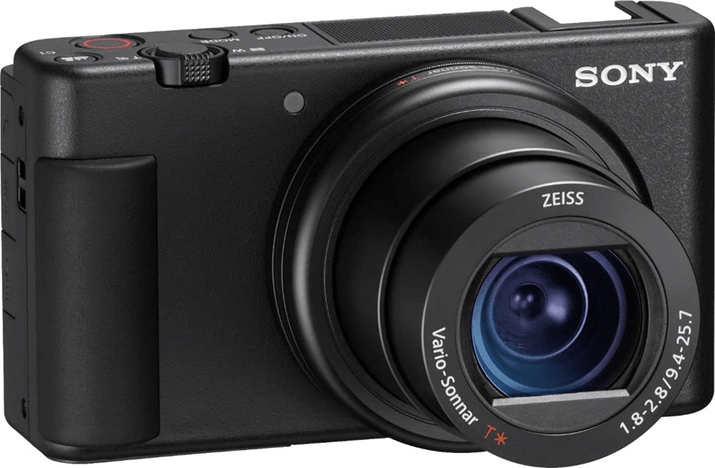Canon PowerShot G1 X Mark III vs Sony ZV-1 Comparison
Canon PowerShot G1 X Mark III

Sony ZV-1

The Sony ZV-1 edges out the Canon PowerShot G1 X Mark III with a score of 65/100 compared to Canon’s 62/100. Both cameras share similarities in their release years (2016 for Canon and 2020 for Sony) and launch prices ($1120 for Canon and $800 for Sony). The Sony ZV-1 excels in its compact size (105 x 60 x 44mm) and lightweight design (294g), making it more portable than the Canon PowerShot G1 X Mark III (138 x 102 x 135mm and 915g).
However, the Canon PowerShot G1 X Mark III, being a bridge camera, offers more advanced features and better zoom capabilities compared to the compact Sony ZV-1. Despite the advantages of each camera, the Sony ZV-1’s higher score reflects its better overall performance and value for money.
Canon PowerShot G1 X Mark III vs Sony ZV-1 Overview and Optics
The Sony ZV-1 surpasses the Canon PowerShot G1 X Mark III in our optics comparison, scoring 67/100 versus the Canon’s 63/100. Both cameras share common specifications, such as 20 megapixels, CMOS sensor type, 1″ sensor size, fixed lens mount, and image stabilization.
The Sony ZV-1 outperforms the Canon in certain areas. It has a faster shooting speed of 24, double that of the Canon’s 12. This means that the Sony can capture more images in a shorter time, making it ideal for action photography. Additionally, the Sony ZV-1’s sensor received a higher DXOMARK score of 82, compared to the Canon’s 71, indicating better overall image quality.
On the other hand, the Canon PowerShot G1 X Mark III has its advantages, despite the lower optics score. The Canon features a Venus Engine processor, which, although not as powerful as the Sony’s Bionz X processor, still delivers reliable performance. Furthermore, the Canon’s 1″ sensor size is the same as the Sony’s, ensuring comparable image quality.
In comparing the optics of the Canon PowerShot G1 X Mark III and the Sony ZV-1, the Sony emerges as the superior option due to its faster shooting speed and higher DXOMARK sensor score. However, the Canon remains a reliable choice with its Venus Engine processor and identical sensor size. Ultimately, both cameras offer quality optics, with the Sony ZV-1 holding a slight edge over the Canon PowerShot G1 X Mark III.
Canon PowerShot G1 X Mark III vs Sony ZV-1 Video Performance
The Sony ZV-1 outperforms the Canon PowerShot G1 X Mark III in video capabilities, earning a score of 91/100 compared to the Canon’s 83/100. Both cameras share some common specifications, such as 4K max video resolution and built-in time-lapse functionality. However, there are key differences that contribute to the higher score of the Sony ZV-1.
One advantage of the Sony ZV-1 is its higher max video frame rate of 120fps, whereas the Canon PowerShot G1 X Mark III has a max frame rate of 60fps. This allows the Sony ZV-1 to capture smoother and more detailed slow-motion footage, making it a better option for users who prioritize this feature.
Despite the Sony ZV-1’s higher score, the Canon PowerShot G1 X Mark III has a slight edge in max video dimensions, offering 4096 x 2160, compared to the Sony ZV-1’s 3840 x 2160. This means the Canon can produce slightly larger video files, which may be beneficial for users who require larger dimensions for their projects.
While both cameras have strong video capabilities, the Sony ZV-1’s higher score and superior max video frame rate make it the better choice for users who prioritize smooth slow-motion footage. On the other hand, the Canon PowerShot G1 X Mark III’s slightly larger max video dimensions may appeal to those who require larger video files for their work. Ultimately, the choice between these two cameras depends on the specific needs and preferences of the user.
Canon PowerShot G1 X Mark III vs Sony ZV-1 Features and Benefits
The Canon PowerShot G1 X Mark III edges out the Sony ZV-1 in features, scoring 70/100 compared to the Sony’s 68/100. Both cameras share several similarities in their specifications, including a 3-inch screen, touchscreen capabilities, flip screen, GPS, Wi-Fi, and Bluetooth connectivity.
The Canon G1 X Mark III surpasses the Sony ZV-1 with a higher screen resolution of 1,040,000 dots, while the ZV-1 has a resolution of 921,600 dots. This difference in resolution provides the Canon with clearer and sharper images on the screen, making it easier for photographers to review their shots and adjust settings.
On the other hand, the Sony ZV-1 still holds its ground with certain advantages. Although it has a slightly lower feature score, it may offer other benefits not covered in this comparison, such as a better sensor, improved image quality, or enhanced video capabilities. These factors could potentially make it a more suitable choice for some users.
Considering the features of both cameras, the Canon PowerShot G1 X Mark III stands out with its higher resolution screen, providing a better user experience. However, the Sony ZV-1 should not be dismissed, as it may excel in other aspects not discussed here. Ultimately, the choice between these two cameras depends on the specific needs and preferences of the user, as well as the importance they place on specific features and capabilities.
Canon PowerShot G1 X Mark III vs Sony ZV-1 Storage and Battery
The Sony ZV-1 wins in the storage and battery category with a score of 29, while the Canon PowerShot G1 X Mark III scores 21. Both cameras have one memory card slot and accept SD/SDHC/SDXC cards. However, the Sony ZV-1 also supports Memory Stick Pro Duo/Pro-HG Duo cards, giving users more storage options.
The Canon PowerShot G1 X Mark III has a longer battery life of 350 shots compared to the Sony ZV-1’s 260 shots. This advantage makes the Canon camera more suitable for extended use without needing to replace or recharge the battery. On the other hand, the Sony ZV-1 offers USB charging, allowing users to charge the camera more conveniently using a power bank or other USB charging sources.
Despite the Canon G1 X Mark III’s longer battery life, the Sony ZV-1’s additional memory card compatibility and USB charging feature make it a better choice in terms of storage and battery capabilities.
Canon PowerShot G1 X Mark III vs Sony ZV-1 – Our Verdict
Are you still undecided about which camera is right for you? Have a look at these popular comparisons that feature the Canon PowerShot G1 X Mark III or the Sony ZV-1:
